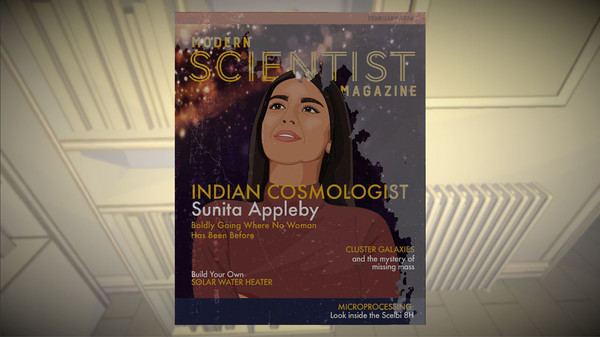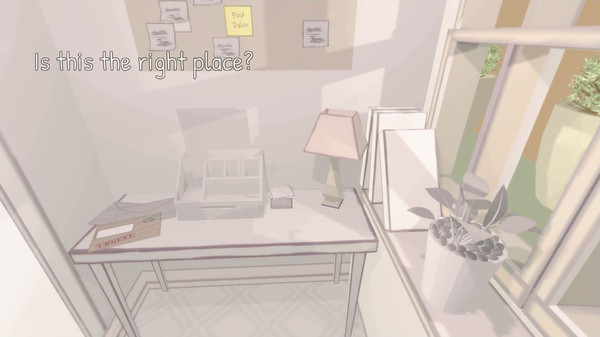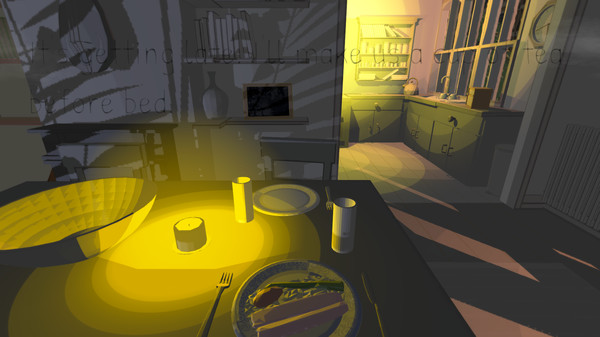A new understanding.
“It validated there was something wrong, and I wasn’t going crazy.”
These are the words of somebody living with dementia, as told to the Alzheimer’s Association in their Guide to Quality Care from the Perspectives of People Living with Dementia. When it comes to diseases of the brain, there is only so much that we can understand from the outside looking in; and dementia progressively chips away at a person’s experience of the world over time, something it’s extremely difficult to imagine. When it comes to people living with dementia, we must emphasize the people rather than the dementia. Videogames are uniquely placed to help build empathy in this respect.
Before I Forget is a first-person game that casts the player as Sunita, a fictional woman living with dementia. It’s not a precise simulation of such a life – nor does it claim to be – but it’s a fascinating and educational take that provides the player with an emotional connection that a book or documentary would struggle to deliver. As Sunita, we hear her thoughts, literally walking in her shoes, joining her story as she writes her ending.
Gradually, we float on a wave of sadness as we gain an understanding of her situation that she is powerless to grasp herself.
Sunita used to be a hugely successful cosmologist, looking to the stars for both questions and answers
The first thing I learned when I started looking into dementia was that I didn’t know very much about it. I already knew that ‘dementia’ is an umbrella term, a word that encompasses a wide variety of diseases that attack the brain (the most common form of which is Alzheimer’s). I also knew that these diseases affect a person’s memory. I didn’t realise, however, that things are much more complicated than that.
In order to help strengthen my understanding of dementia, I got in contact with Alzheimer’s Research UK’s Dementia Research (ARUK) Infoline. I asked them to elaborate on the issue of auditory and visual hallucinations, something that commonly (though not always) comes with Alzheimer’s, or dementia with Lewy bodies.

“They’re not always related to memories or past experiences,” they said. “Commonly, hallucinations are completely abstract (made up) and disturbing, especially in the later stages of the disease. For example seeing people or things that are not there, like seeing or hearing someone breaking into the house”.
Early in the game, there is a gaping hole in the floor that scares Sunita, preventing her from progressing down a corridor. It’s a familiar game mechanic to steer the player’s movement, but it’s also a good example of what can happen with diseases such as Alzheimer’s.
“[It’s] not typically a hallucination,” says ARUK. “Usually the hole [that you’re] seeing is actually something else, like a puddle, shadow, or different coloured part of the floor (like a doormat or rug), the brain has just misinterpreted what it is – so more of a visual distortion”.
Before I Forget incorporates hallucinations with some creative license. As sometimes happens with people living with dementia, encountering certain images or sounds in the game can trigger a strong memory, which Forget presents as a change in the environment, or a short interactive sequence taking place in the past. Towards the end, there is a surreal series of oppressive corridors, which also serve as a metaphor for Sunita’s journey to a devastating realization.

As interesting as the many forms of dementia and their symptoms are, it’s important to remember that each and every person living with such a disease is a human being. This is a fact that Before I Forget is keen to emphasize, and – despite a brief runtime of just 45-60 minutes – it does a wonderful job of painting a life lived… and largely lost.
Although she now only has sporadic memories of it – when recognizing the fact, treating old memories as current events – Sunita used to be a hugely successful cosmologist, looking to the stars for both questions and answers. One of the first objects you’ll discover in her apartment is an old magazine with her on the cover, something that we as the player understand, yet something that confuses Sunita herself.
Each and every person living with such a disease is a human being.
We even get to discover where this passion for astronomy began. As a young Sunita in one of the flashback sequences, we get to trace constellations through the sky at our auntie’s direction, before enjoying tales of the legends associated with them. There’s a tinge of sadness with one of the stories, though, as our aunt tells us “not every story can have a happy ending, Suni. Not even for the gods”.
From the beginning to the end, excepting some distractions, Sunita is searching for Dylan; we learn this is her husband, a famous concert pianist. Memories allow us to see the good times and the bad, right up until the final moments of the game where, indeed, we see the injustice of Sunita being denied her own happy ending. Sunita is not a vessel for learning about dementia. We see her as a person with a life lived, who has loved, laughed, lost, succeeded, and made mistakes. It highlights the ruthlessness and cruelty of dementia for those who encounter it.

But how and why do the many forms of dementia steal away a life piecemeal, leaving some memories while eradicating others?
“Everybody declines at a different speed or pace, but it is in the later stages of dementia, typically in the months and weeks leading up to death that most of a person’s memories are lost,” explains ARUK. “Simple but personal things may be remembered, like their own name or the place that they grew up in, others may remember a little more, some may not even remember these things. It tends to be things from earlier life, and the more significant things that have happened to us, for example where we grew up, our parents or siblings’ names, when/where we got married, partners’ names, children’s names that are forgotten last. And some people can often reliably recall these things in the later stages too, right up until they die.
“Frequently recalled memories or pieces of information relating to our lifetime are stored in the brain’s cortex, which is less affected by [dementia] until the much later stages. Short term memories, like what we did last week or even yesterday, rely on our hippocampus for retrieval. This brain structure is often the first place that Alzheimer’s disease affects, which is why short term memory loss and forgetfulness are often the first noticeable symptoms that someone will experience”.
Before I Forget doesn’t go into the neurological detail. It doesn’t need to. It concerns itself with humanizing those living with dementia, something it achieves with a bittersweet beauty. When Sunita can’t make it to the bathroom in time, each door she believes to be the right one leading her back to the closet, the pain and embarrassment in her voice cuts deep.
We as the player are lifted by her happy memories and wounded by the sad ones. It reminds us, most importantly of all, that those living with dementia in the world are every bit as real as us.
If you would like to learn more about the many forms of dementia, the Alzheimer’s Research UK website is a great place to start. In Canada, the Alzheimer Society is a useful starting point, while the Alzheimer Association serves both the United States and Canada.
Luke is a part-time freelancer who regularly contributes to Official PlayStation Magazine UK. He has also written for many other clients including The Guardian, Eurogamer, PC Gamer, and Edge. He has in recent months started a Patreon, which can be found at Patreon.com/LukeKemp
IMAGES: 3-Fold Games
